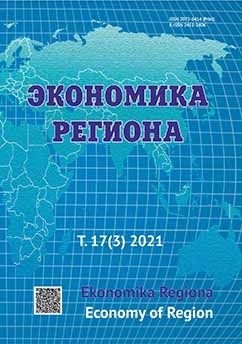Межстрановые пространственные зависимости по показателям человеческого развития
Cross-country Spatial Patterns in Terms of Human Development Indices
Author(s): Igor Yurievich Okunev, Sergey Leonidovich Barinov, Aleksandr Alexandrovich Belikov, Yana O. POLYAKOVASubject(s): Social Sciences, Economy, Regional Geography, International relations/trade, Human Resources in Economy, Socio-Economic Research
Published by: Институт экономики Уральского отделения Российской академии наук
Keywords: human development; human development index; cluster analysis; spatial analysis; social geography; political geography; comparative analysis; spatial research; international relations; world countries;
Summary/Abstract: The present study attempts to answer the question, which is not considered in the United Nations’ annual Human Development Reports, namely, how spatial patterns of the world countries differ in terms of human development indices. The quantitative research includes three phases. First, functional relations between indices were analysed based on Moran’s I and data fitted by linear regression. Second, clustering of the world countries by human development indices revealed seven spatial clusters. Third, the countries were classified by the types of significant human development problems. The classification distinguished various types of countries: prosperous, problematic and problematic in certain areas. Correlation and spatial dependence analysis demonstrated an important relationship between education and child indicators, in particular, years of education and life expectancy. As a result, the territorial concentration of countries with similar human development was noticed. According to all four groups of indices, 51 prosperous countries (the majority of which are members of the Organisation for Economic Co-operation and Development (OECD)) are characterised by the lack of serious problems. The group of problematic countries includes 51 territories mostly located in sub-Saharan Africa, as well as in Asia, Latin America and Oceania. The findings on relative similarity observed in the identified clusters and groups can be used for developing standard solutions to improve human development. Further research in this direction seems promising.
Journal: Экономика региона
- Issue Year: 17/2021
- Issue No: 3
- Page Range: 855-872
- Page Count: 18
- Language: Russian

